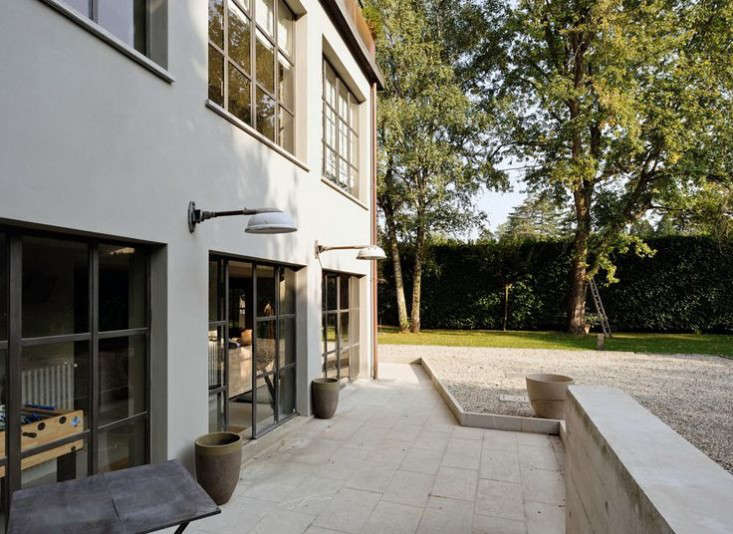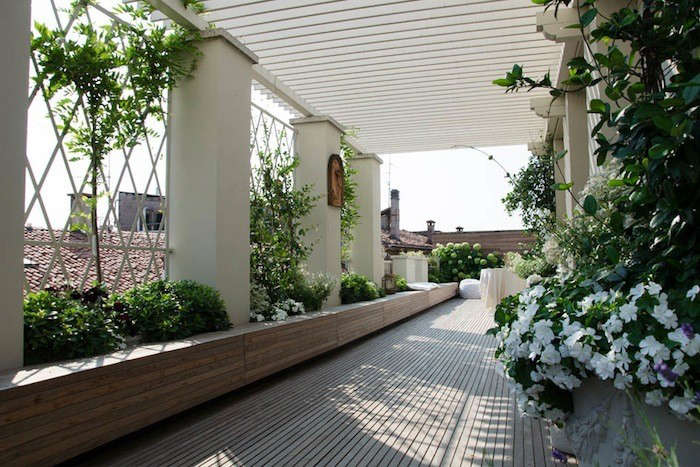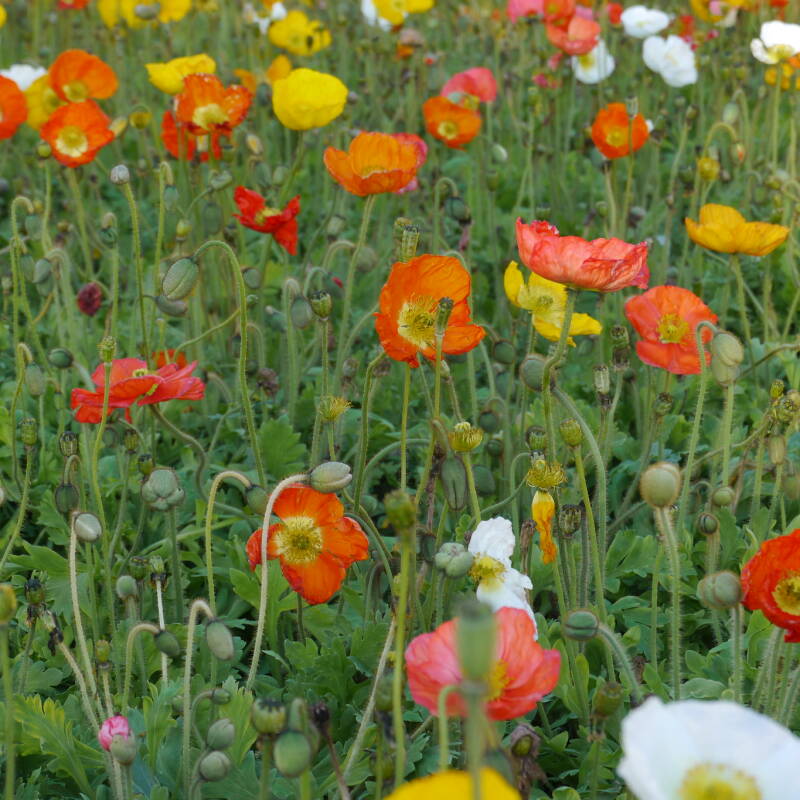Italian romanticism starts in the garden: oversized squashes in September, fragrant orange blossom year-round, the drama of a green cypress, and lightness of a single olive tree.
When we think of the Italian garden we think of those seen in cinema: Michelangelo Antonioni’s woman running across a gravel courtyard–the sound of the rocks crunching under her shoes–and Federico Fellini’s moment of dancing in the Trevi Fountain. The takeaway? Spontaneity, romance, and good hardscaping.
We visited some of our favorite gardens across Italy for 10 essential tips on adding Italian sensibility to your outdoor space.
Symmetry, Geometry, and Repetition

For more of this landscape, see Paradise Found: Designer Dan Pearson’s Modern Garden for a Medieval Castle.
Hardscaping First

Above: A key characteristic of the Italian garden is the hardscaping: gravel promenades, piazza-like courtyards, water fountains, and statuary lay the foundation for trees, flowers, and vegetable beds. Photograph from Milanese Minimalism: A House by Raboni Architetti on Remodelista.
Respect History

Above: From the mountains and countryside to the cities and coasts of Italy, history–art history–is ubiquitous. In most villas, the sculptures, stoneware, water features, and statuary of old can be seen throughout the gardens. Let your new additions grow with the old; restore, don’t replace. Photograph from Villa Lena.
Plant Evergreens

Above: Villa Lena, an artist community and vacation rental in Tuscany, is shrouded in towering Italian cypress, boxwood, and juniper trees. Photograph from Villa Lena.
Grow Citrus Trees

Above: Italian gardens, like those of Mediterranean neighbors Spain, Portugal, and Morocco, take advantage of the climate and grow plentiful citrus for use in everyday cooking. Photograph from House Tour: Pastels Go Rustic in an Italian Farmhouse on Remodelista.
Create a Garden Room

Cook Dinner Outdoors

See more in Garden Visit: An Italian Terrace.
Don’t Waste a Good Terrace

Above: The terrace is a central feature of Italian architecture. Do as the Italians do and make the best of your balcony, porch, or deck with climbing vines and fragrant flowers. Photograph in From Italy With Love: The World’s Best View From a Terrace.
Enlist Your Community

Above: To find the closest arborist in an Italian town, knock on your neighbor’s door. At Casa Poggio in the Sabine Hills 30 miles north of Rome, new owners took over the property with 130 olive trees without any knowledge of how to care for them. Their local farmer came over and taught them how to prune the trees, reviving the olive trees after years of neglect. Photograph from The Italian Job: A Vacation Villa, Olive Grove Included.
Grow Anywhere

Above: An apartment in Vernazza, Italy, one of the Cinque Terre’s five seaside towns, trades a doorway step for garden space. Photograph by Alexa Hotz.








Have a Question or Comment About This Post?
Join the conversation